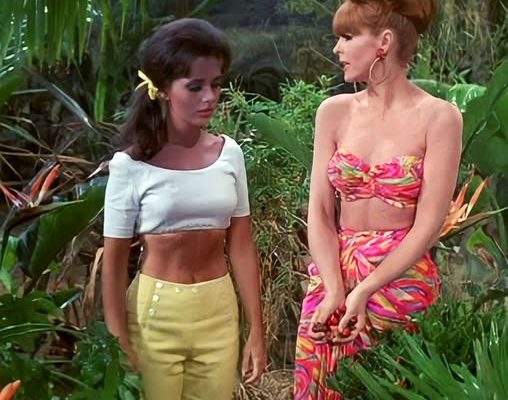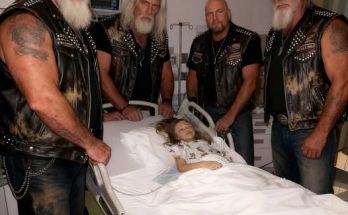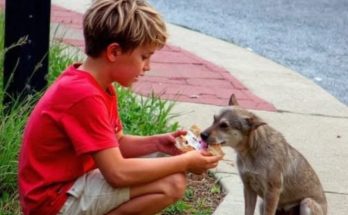“Gilligan’s Island” is one of those rare shows that refuses to fade. It ran from 1964 to 1967—only three seasons—yet it cemented itself as a cultural staple. The premise was simple: seven castaways stranded on an island after what was supposed to be a harmless “three-hour tour.” But the show’s humor, charm, and eccentric characters carved out a permanent place in TV history. And like any production from that era, it had its share of mistakes, odd behind-the-scenes stories, and quirks that fans still catch decades later.
One of the strangest bloopers appears not in an episode but in the opening credits of season two. The scene at the marina shows the S.S. Minnow leaving the dock with the cast on board, but sharp-eyed viewers have noticed something odd: in two separate shots, there are eight passengers instead of seven. It turns out the extra figures weren’t secret castaways. They were stand-ins used for wide shots while the real actors were off set. Most viewers never spotted it, but once you see the extra silhouettes, you can’t unsee them.
Another memorable slip appears in the season two episode “The Friendly Physician,” where the castaways visit a neighboring island occupied by a mad scientist. The plot is already bizarre—body swapping, experiments, and Gilligan briefly sharing Mrs. Howell’s brain—but during the escape scene, a piece of Hollywood sneaks into the frame. If you look past the lagoon, you can spot structures from the CBS studio lot. The lush foliage that normally hides warehouses and soundstages wasn’t positioned quite right for that angle, leaving a quiet reminder that the “tropical island” was a carefully built set in the middle of Los Angeles.
Not every behind-the-scenes moment was lighthearted. When the original pilot, titled “Marooned,” was being filmed in Honolulu Harbor, news broke that President John F. Kennedy had been assassinated. Production halted as military bases shut down during the national mourning period, delaying the shoot. In the season one intro, American flags in the background can be seen at half-mast—an unplanned detail that marks the show’s tragic historical context.
Casting stories also add surprising texture to the show’s history. Alan Hale Jr. became iconic as the Skipper, but landing the role wasn’t easy. While filming a Western in Utah, Hale rode off set on horseback, hitchhiked to Las Vegas, caught a flight to Los Angeles, and arrived in time for his audition. His gamble paid off—he secured the role over several contenders, including Carroll O’Connor, who would later star in “All in the Family.”
On set, mistakes were sometimes small but entertaining. In the butterfly-themed episode where fermented berry juice knocks everyone out, Natalie Schafer, who played Mrs. Howell, accidentally opens her eyes while pretending to be unconscious. In that same storyline, the Professor drinks alcohol despite previously claiming he was allergic—another continuity slip that fans eventually noticed.
The show’s very first episode also carries a handful of technical errors. The scene with Gilligan and the Skipper battling a shark was shot not in open water but in a movie tank. If you watch carefully, you can see the edge of the tank in certain shots and the shadow of the boom mic crossing the raft. And when Gilligan hides inside a tree trunk and a woodpecker taps on his head, there’s another oversight—woodpeckers don’t inhabit remote oceanic islands.
The theme song itself had its own awkward start. In season one, “the rest” referred to the Professor and Mary Ann—no names, no credit. Their characters were essential to the dynamics of the group, but contractual decisions left them lumped anonymously at the end of the song. Bob Denver, who played Gilligan, insisted that they be properly included. Starting in season two, the theme was updated to acknowledge “the Professor and Mary Ann” by name.
Even the shipwrecked vessel carried a hidden joke. The S.S. Minnow wasn’t named after the fish. It was a tongue-in-cheek jab at Newton Minow, the FCC chairman who famously called American television a “vast wasteland.” Show creator Sherwood Schwartz didn’t take kindly to the remark and immortalized the critique in the most direct way he could.
Production tricks show up again in “So Sorry, My Island,” where Vito Scotty plays a Japanese sailor who doesn’t know the war ended years earlier. When Gilligan “pilots” the submarine, what you actually see is a diver pushing the periscope and guiding the vessel. At one point, the diver’s air tank briefly breaks the surface. And despite the plot, Japan never developed single-man submarines during World War II—another fictional flourish.
Beyond bloopers, the show sparked one of the most enduring pop-culture debates of the era: Ginger or Mary Ann? Tina Louise played Ginger, the glamorous Hollywood star, bringing a mix of elegance and smoldering screen presence. Dawn Wells portrayed Mary Ann, the quintessential girl next door—kind, approachable, and sincere. Both characters captivated audiences for different reasons, and the actresses behind them shared genuine friendship off camera. Wells later reflected that Mary Ann’s relatability helped cement her as a fan favorite, while Ginger embodied the escapist fantasy of classic Hollywood.
The human stories behind the cast are just as compelling. In the episode “They’re Off and Running,” where Gilligan briefly works as a house-boy for the Howells after losing a turtle race, Bob Denver’s real-life wedding ring can be spotted. Gilligan wasn’t married, but Denver wore the ring throughout production.
Fans have long speculated about off-screen romances among the cast. Dawn Wells addressed the rumors directly in later interviews. She described Alan Hale Jr. as paternal, found Gilligan more friend than romantic lead, and acknowledged that many viewers assumed the Professor would be the most eligible. In truth, the cast developed deep platonic bonds rather than romantic ones.
The passage of time has turned the show into a living memory. Today, Tina Louise—now in her nineties—is the only surviving member of the original seven castaways. Her relationship with the show has been complicated. She sometimes felt that the role limited her career, but she has continued to appreciate the fans who grew up with the series and still send letters decades later.
Looking back, “Gilligan’s Island” remains a product of its era—quirky, innocent, occasionally clumsy, and endlessly entertaining. The bloopers, casting oddities, and production quirks don’t diminish the show. They enrich it. They remind us that even iconic stories are built from imperfect moments, rushed shoots, improvisations, and accidents. The charm of the series doesn’t lie in flawless execution. It lies in the warmth of the characters, the simplicity of the premise, and the way it wrapped adventure and humor into thirty-minute escapes from real life.
For fans—new and old—the hidden mistakes make the show feel even more human. They’re reminders that, behind the laughter and the coconut radios, a team of actors and crew were simply doing their best to bring joy to millions. And judging by the fact that we’re still talking about these castaways more than half a century later, they succeeded.



